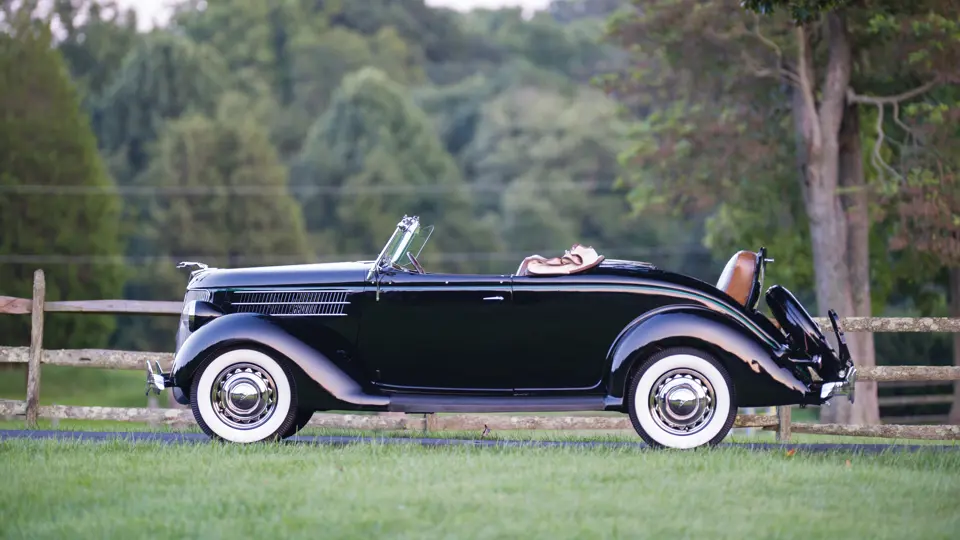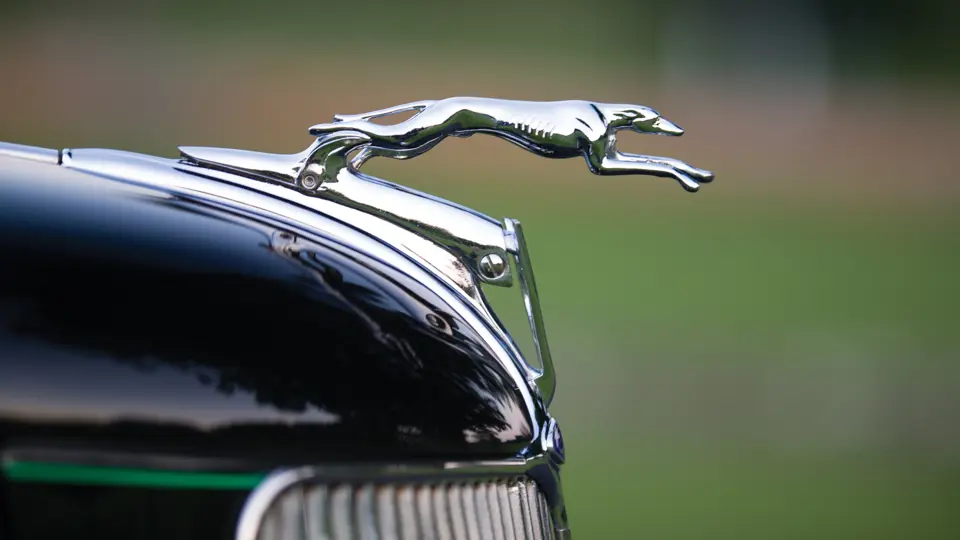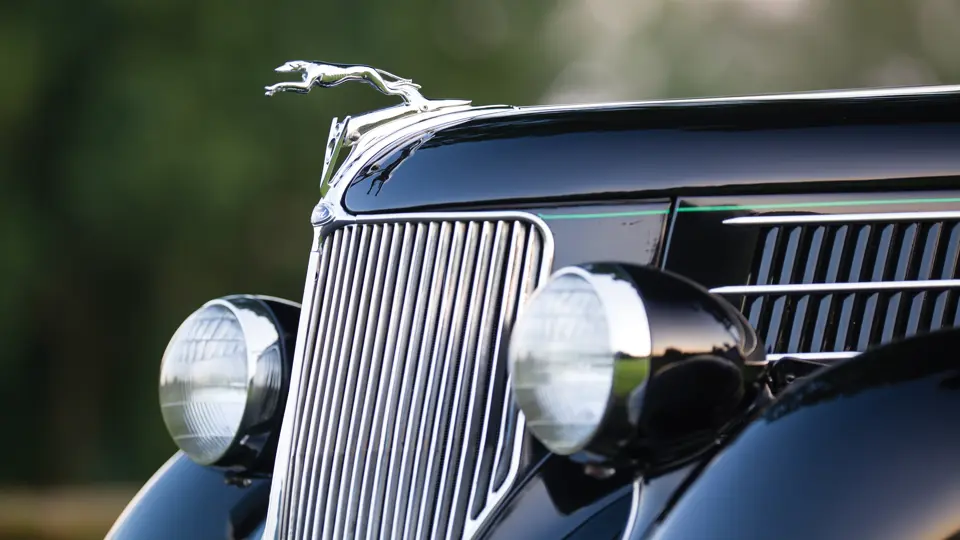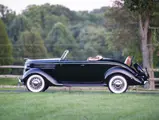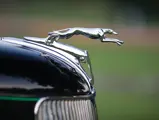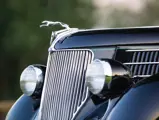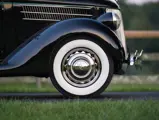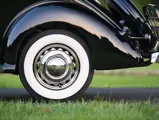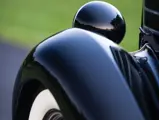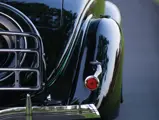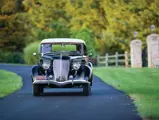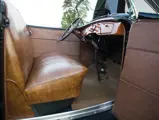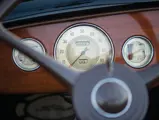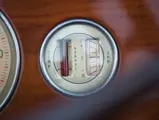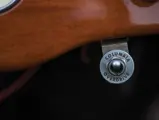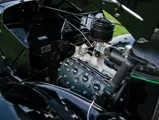Model 68. 85 bhp, 221 cu. in. L-head V-8 engine, three-speed manual transmission with a two-speed Columbia axle, solid front axle and live rear axle with transverse semi-elliptical leaf springs, and four-wheel hydraulic drum brakes. Wheelbase: 112 in.
Ford’s 1936 models are considered among the most attractive of the era, courtesy of a front end restyle by Holden “Bob” Koto, of Briggs Manufacturing Company. Koto, whose career spanned nearly 40 years, later helped Dick Caleal model the 1949 Ford and worked for Raymond Loewy on the 1953 Studebaker. Although the car was in most respects a continuation of the best-selling 1935 models, a number of appearance changes made it seem almost completely new.
Koto gave the car a new hood and grille, the latter with simple thin vertical bars, which were much less fussy than the ’35 item. Wire wheels were abandoned for a pressed-steel “spider” design with a wider bolt circle. Under the skin, a larger radiator aided cooling and transmissions gained helical gears for first and reverse. The net result of these changes did not help Ford in the marketplace, for Chevrolet regained first place in sales. The 1936 Ford’s respect has been longer lasting, though. For more than 50 years, it has been the model of choice for a vast number of collectors and restorers.
As market preference continued to shift toward closed bodies during the 1930s, many manufacturers curtailed their offerings of open models, with some canceling them entirely. While following the trend and offering an array of coupes and sedans, Ford also bucked the competition by keeping a wide range of open cars in the catalogue. Where Chevrolet and Plymouth had but one open style each, a Standard convertible and a P2 Deluxe convertible, respectively, Ford had six. All were available only with Deluxe trim and included a roadster, phaeton, two cabriolets, and two convertible sedans. The club cabriolet had seating for four, while the regular cabriolet had a single bench seat for two. The popularity of the convertible sedan, new in 1935, brought demand for luggage space, so a trunk-back model was added to the line mid-year.
Total soft-top production at Chevrolet and Plymouth for 1936 failed to reach 8,000 combined. Ford, meanwhile, managed nearly 20,000 open cars, with the rarest of the bunch, the Deluxe Roadster, having 3,862 built.
The consignor acquired this car in 2006. It was completely restored about 20 years ago by Allen Ponten, of Charlottesville, Virginia, and has been driven very few miles since. During the restoration, a later-model Columbia two-speed axle was installed and this, plus a hydraulic brake conversion, makes it safe and pleasurable to drive in today’s traffic. This Ford is painted Black with an Apple Green pinstripe, and it is upholstered in brown LeBaron-Bonney imitation leather, with a beige canvas top. Accessories found on the car include wind wings, dual door-hinge mirrors, spider wheel trim, wide whitewall tires, and a greyhound hood mascot. There is also a radio, but this is currently inoperative. The car has received many trophies in shows and local AACA competition.
This lovely, well-cared-for and -maintained Ford V-8 Roadster has recently had its wheels balanced and alignment reset. It runs well and is ready to be shown, toured, or simply enjoyed by a new owner.


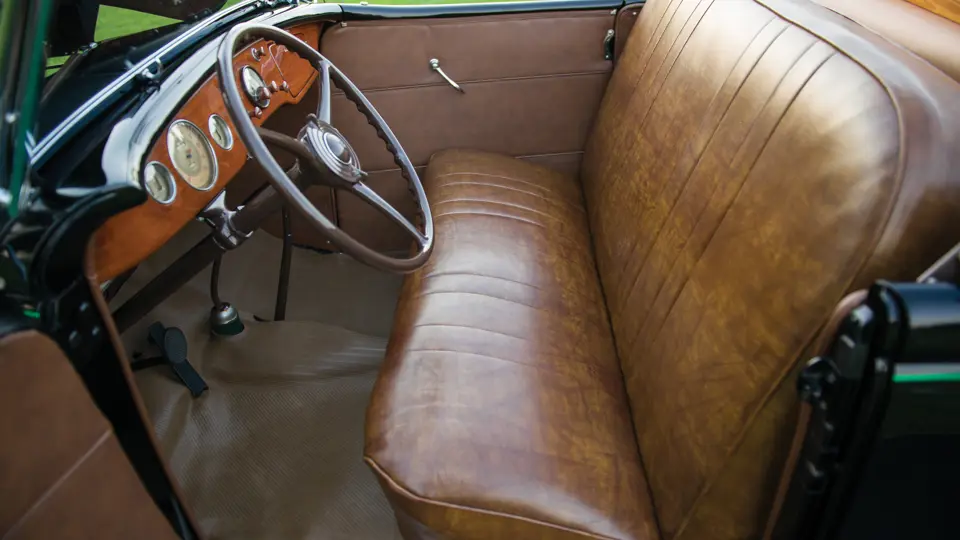

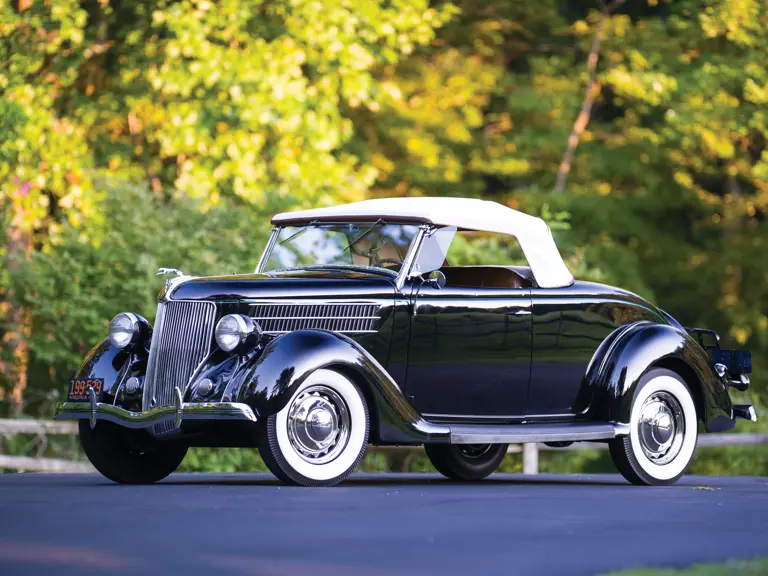
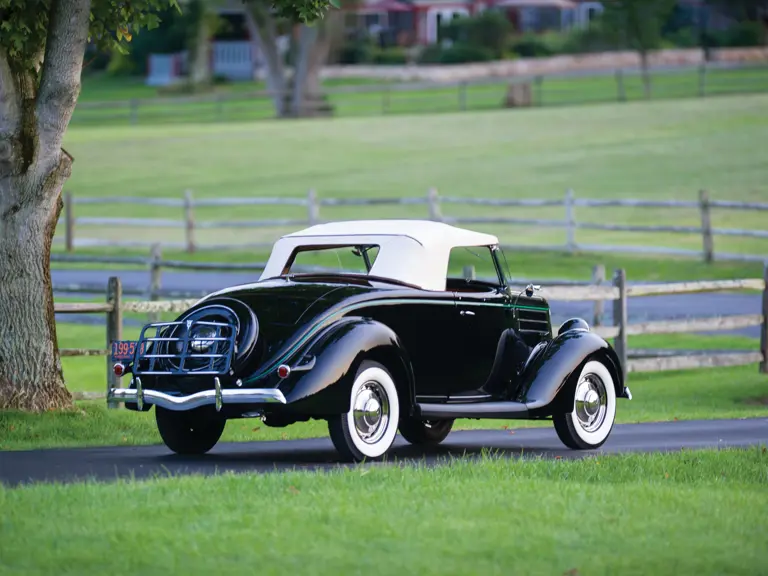
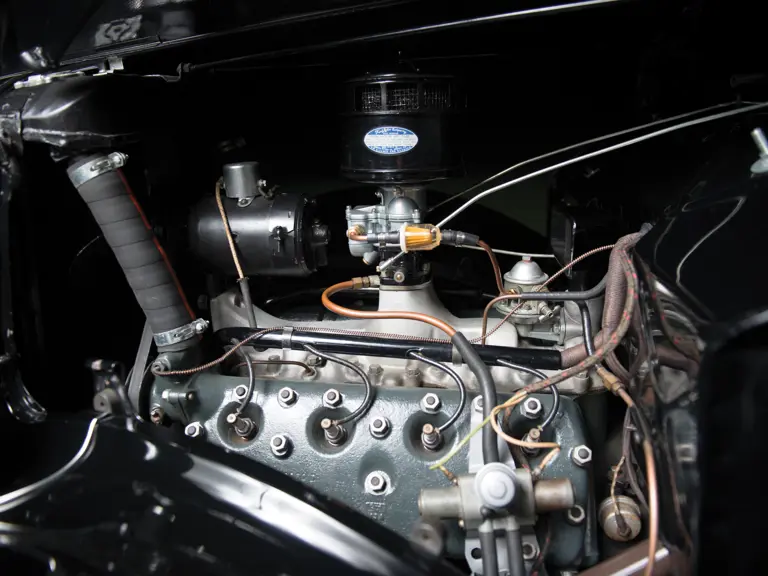
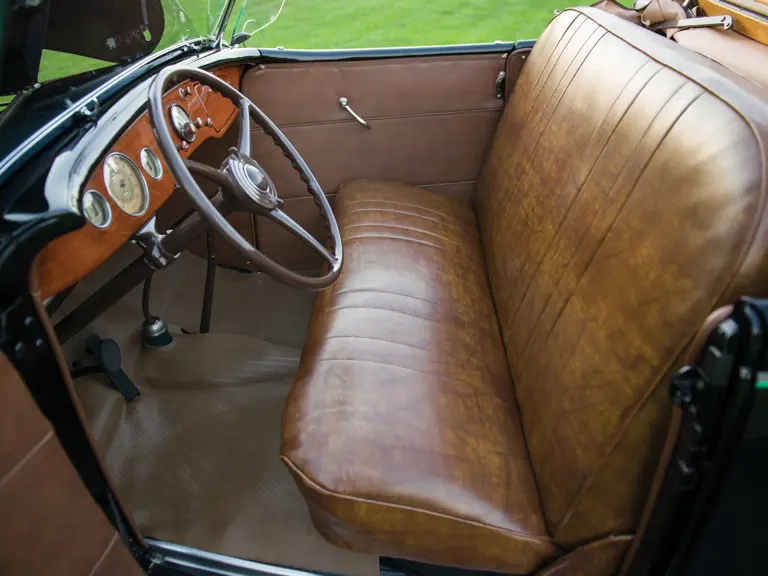

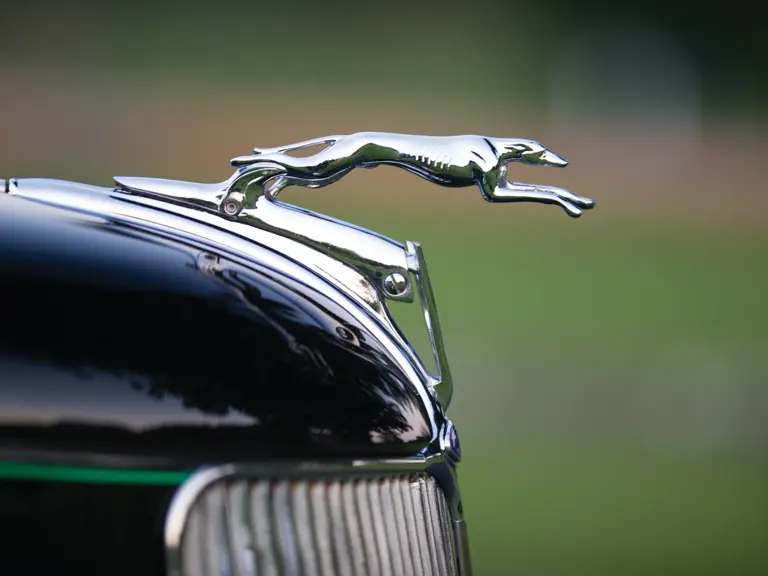
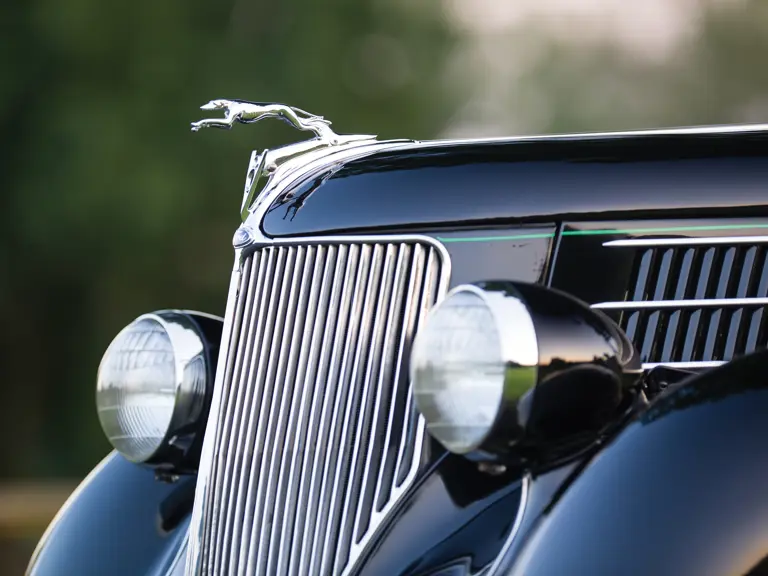
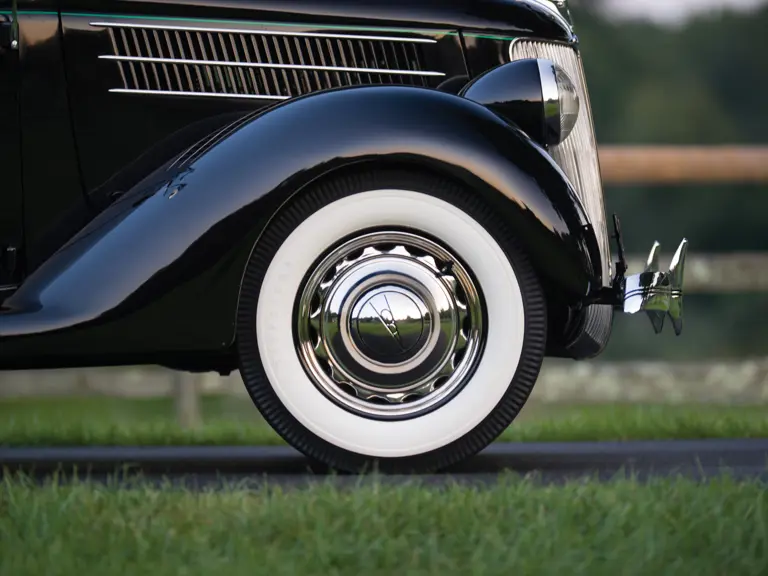
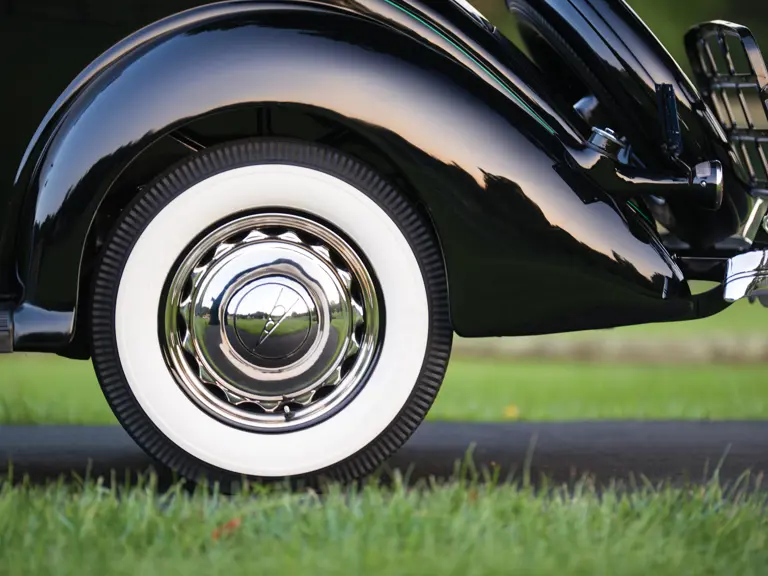


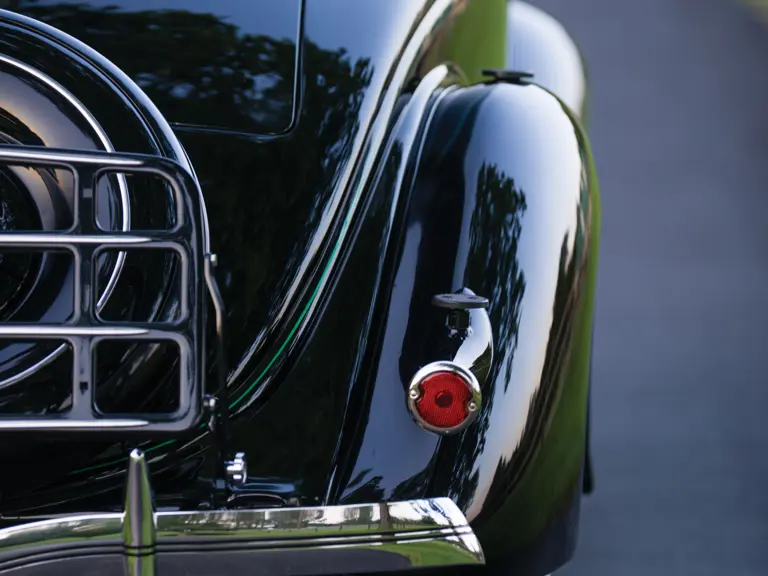

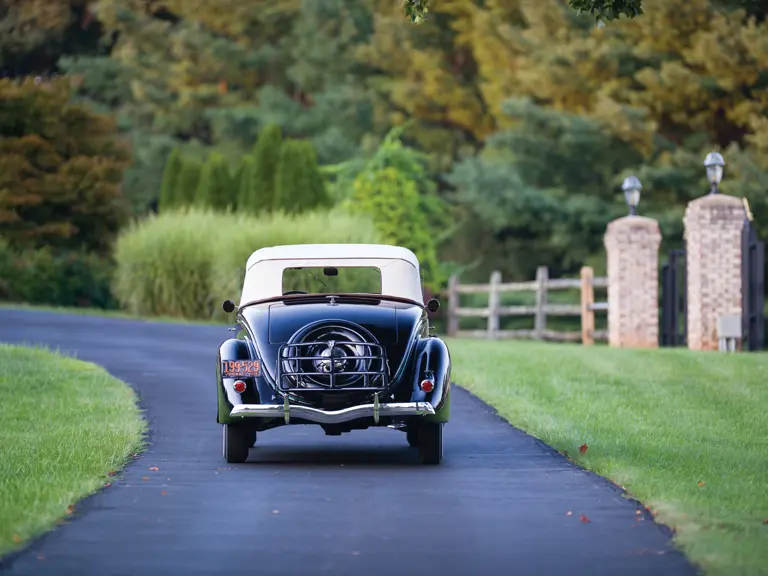
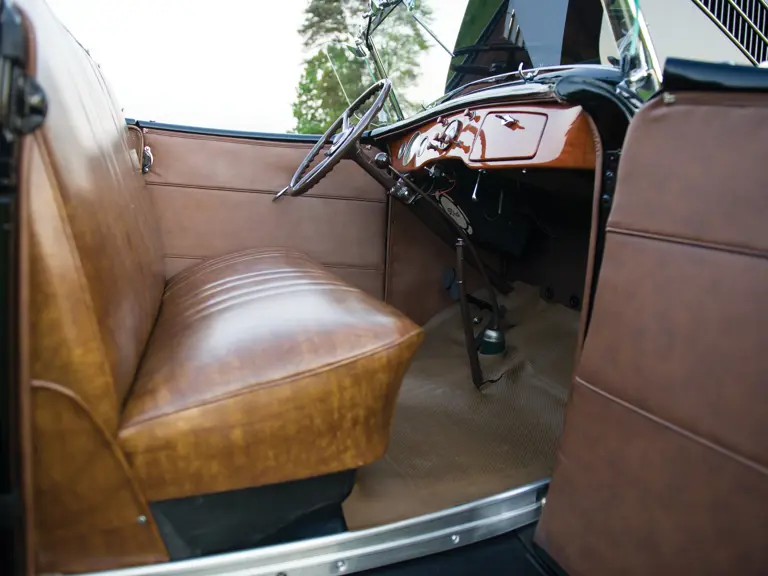
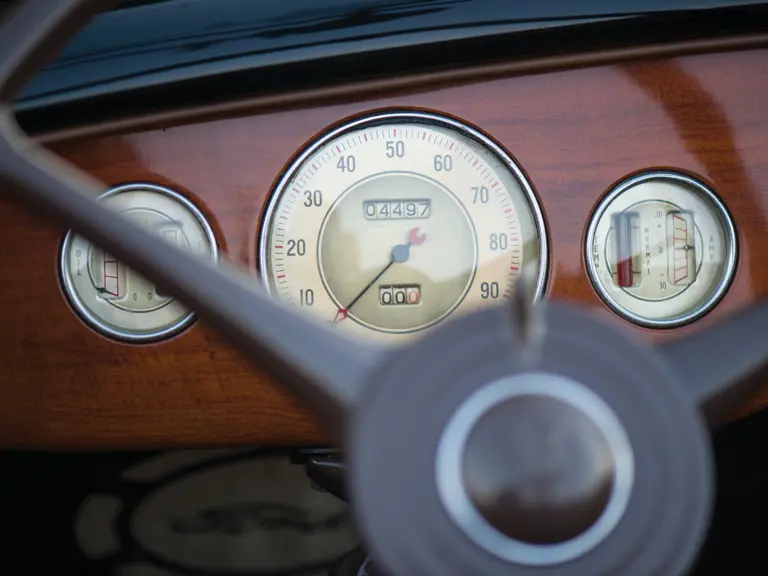
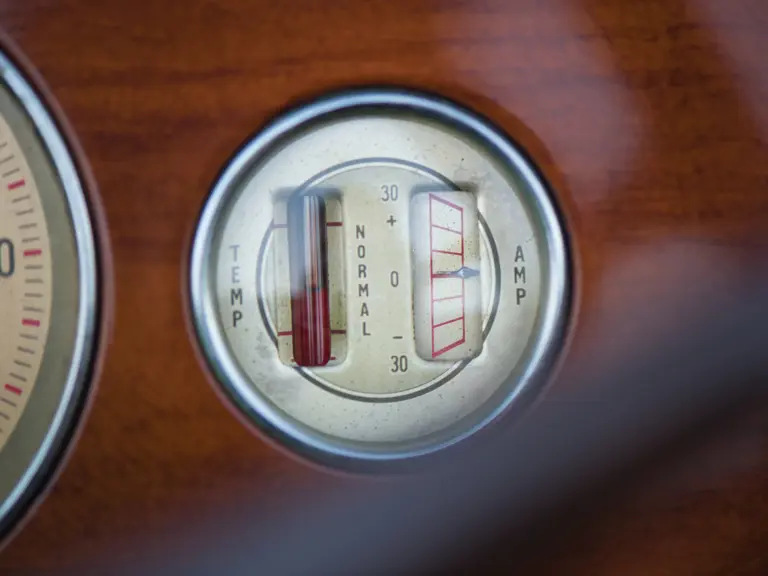
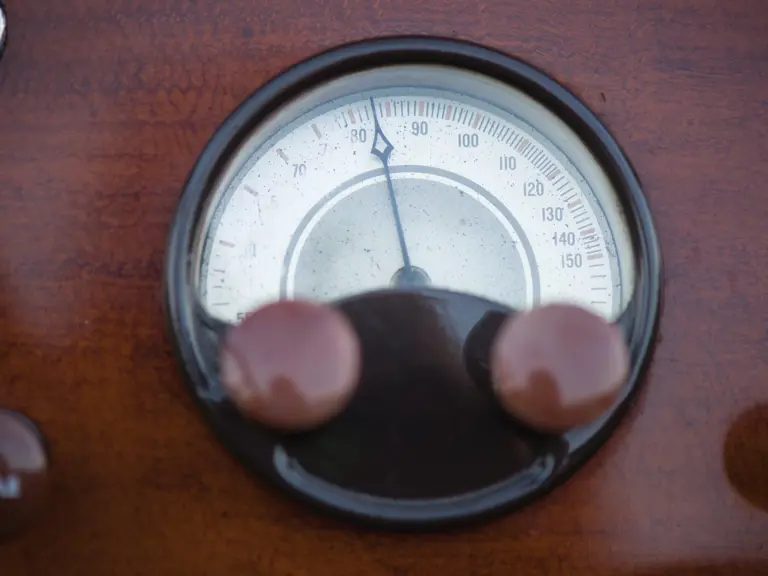

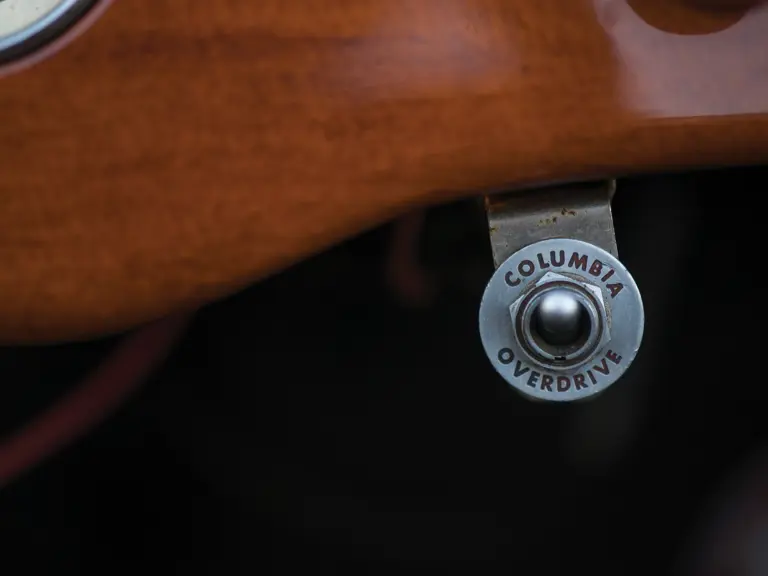
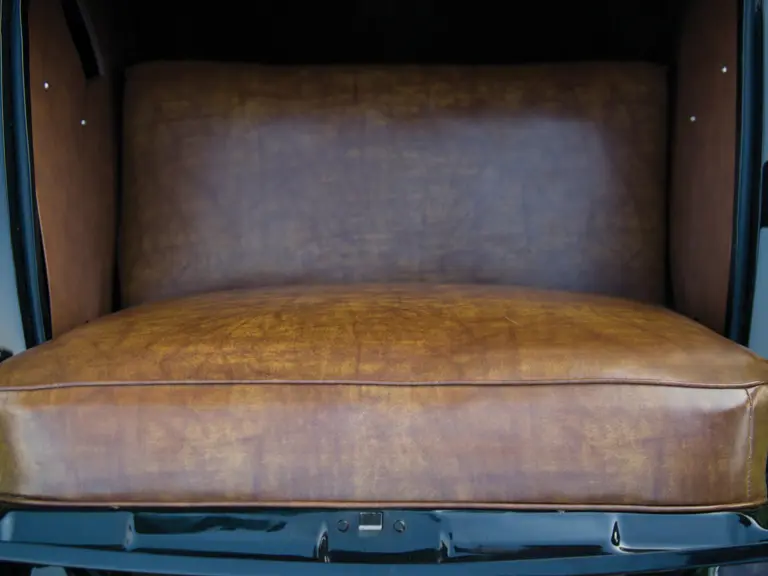

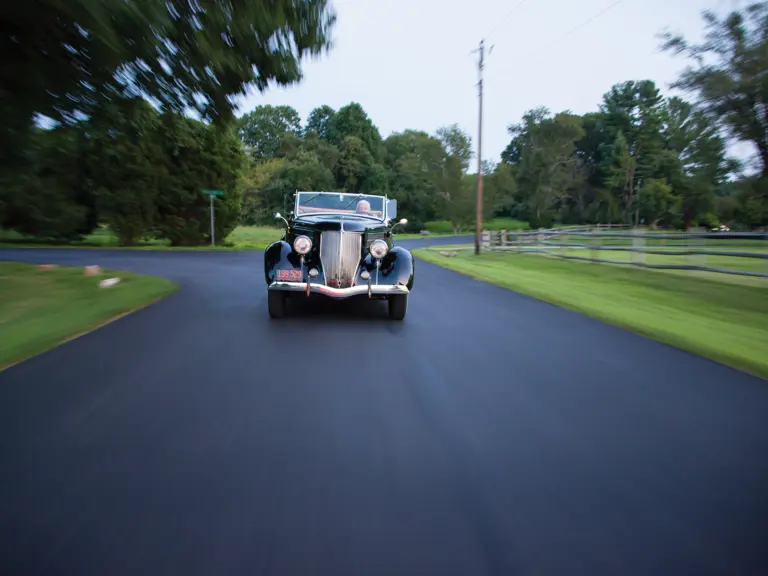
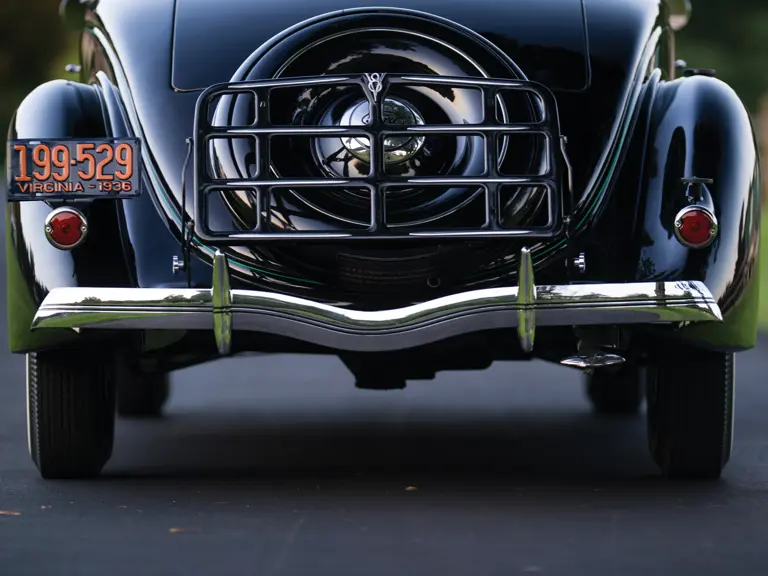
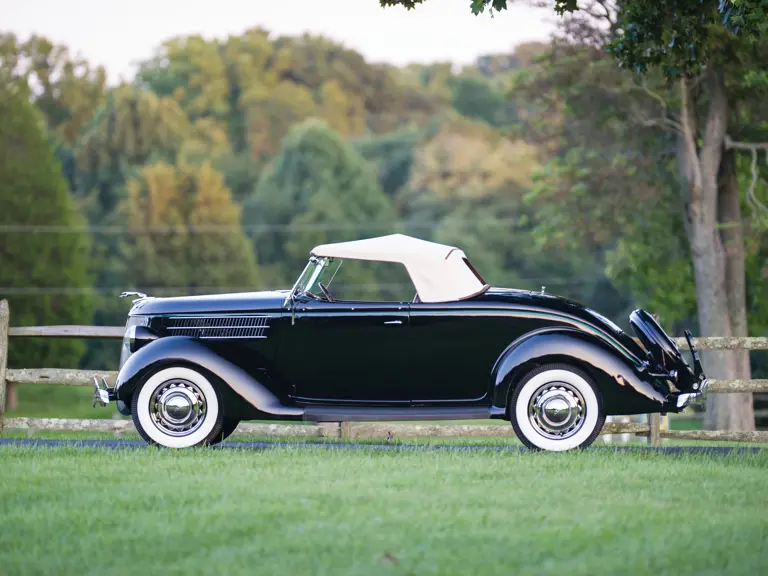
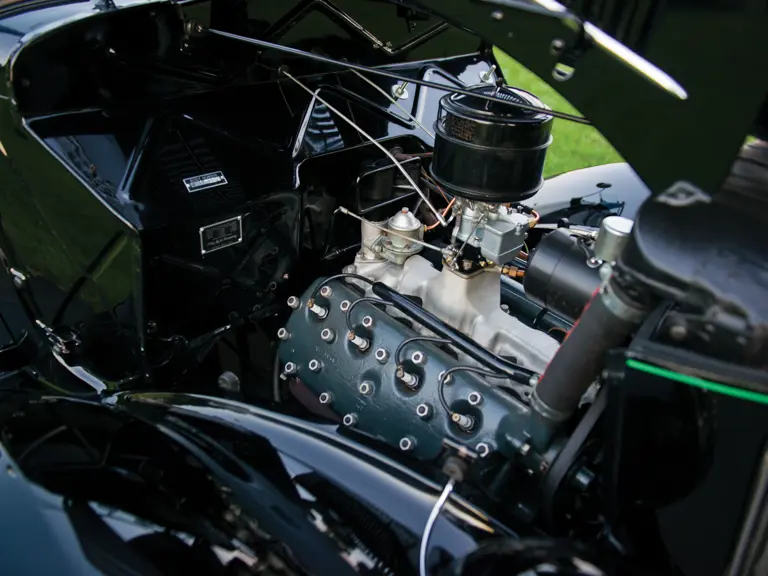
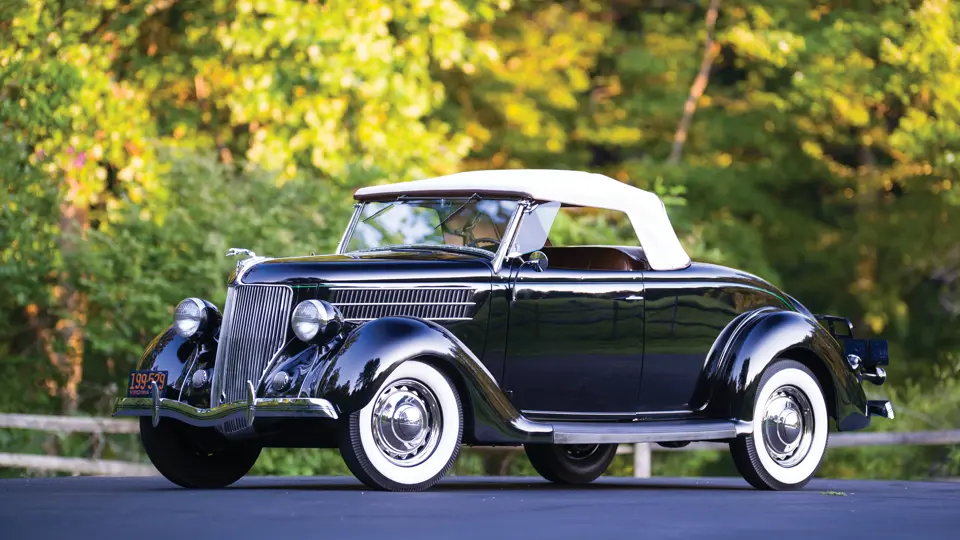
 | Hershey, Pennsylvania
| Hershey, Pennsylvania
